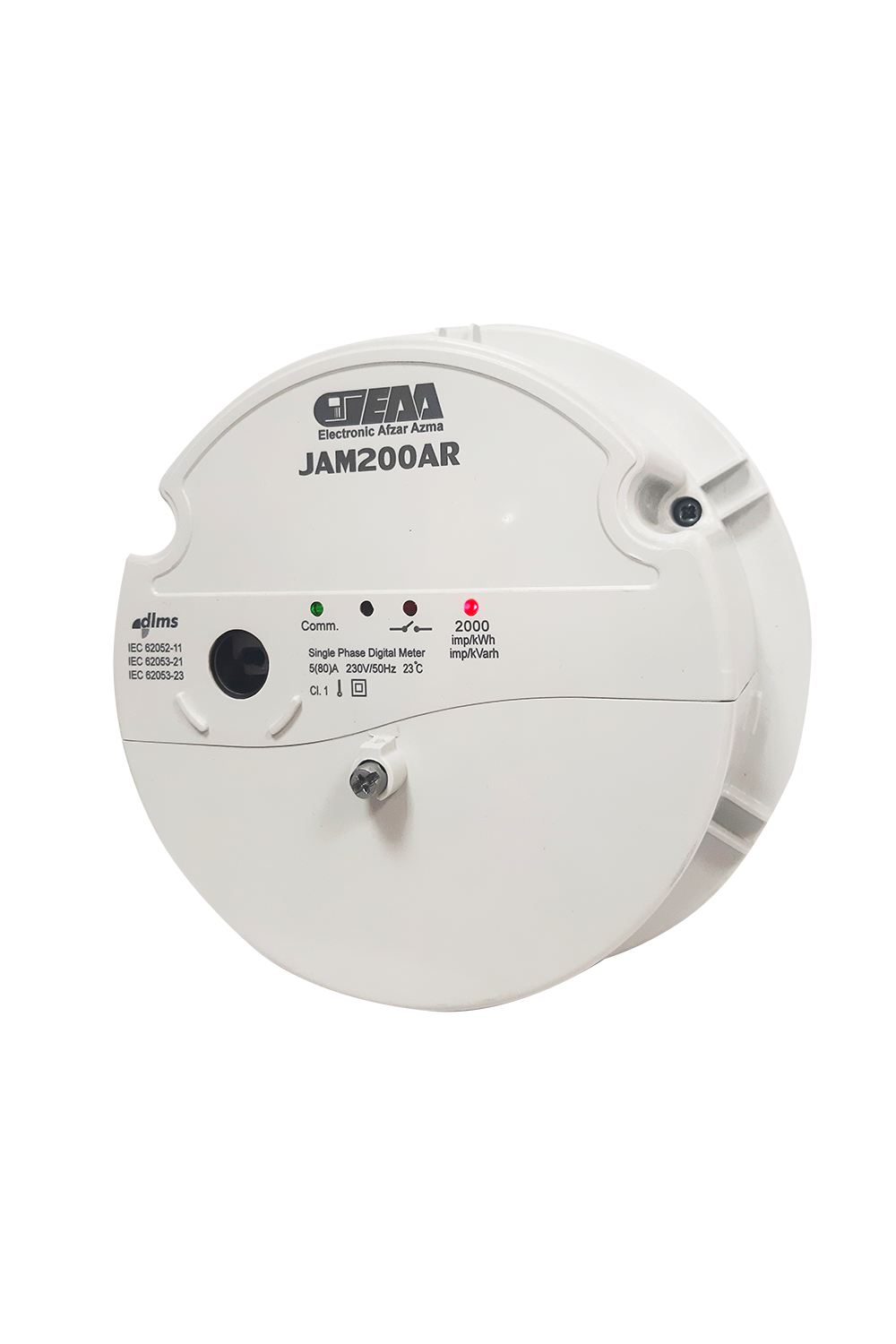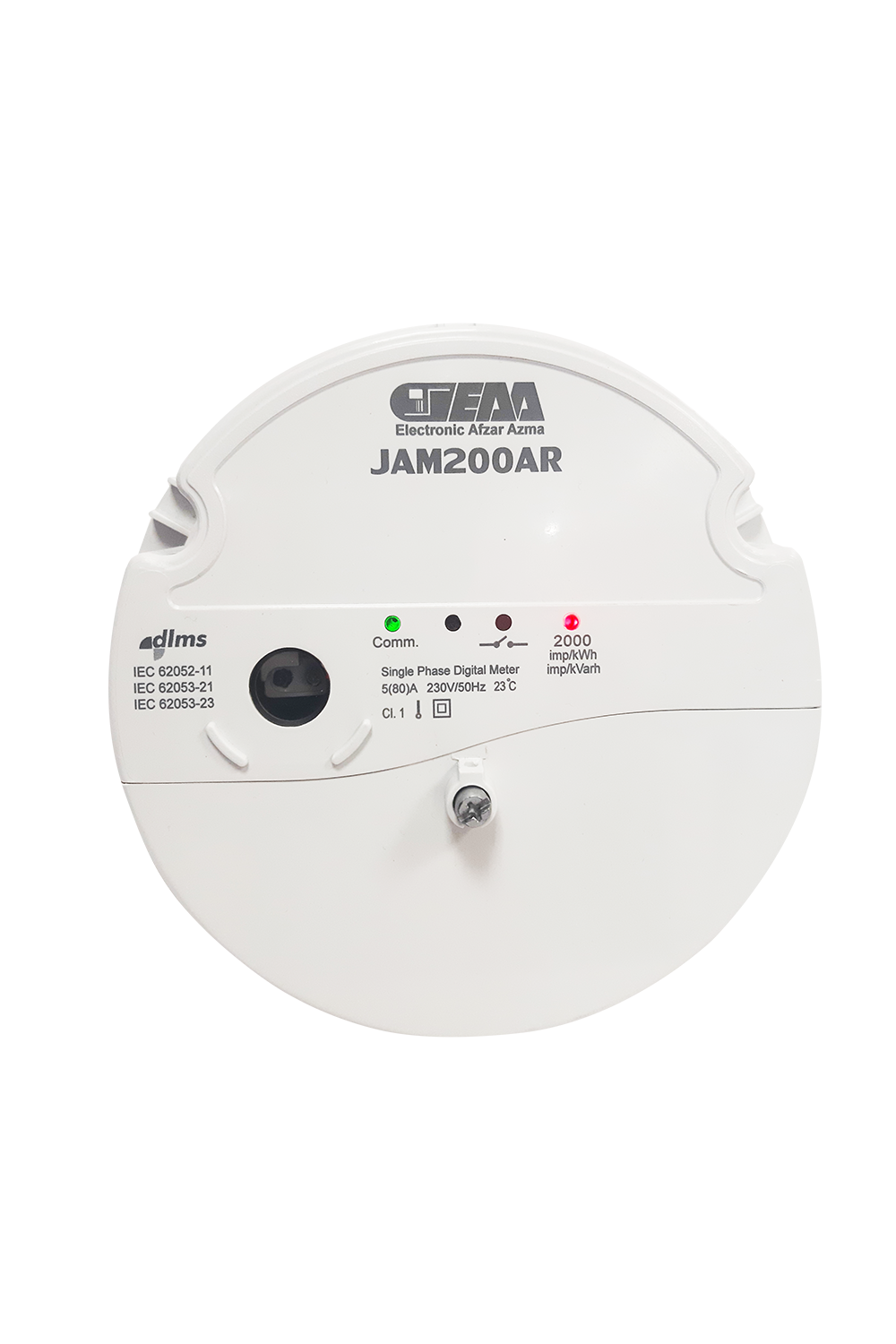
Smart Meter
JAM200AR Single Phase Electricity Meter


- Static, Single Phase, Active / Reactive Energy Bidirectional
- Supports DLMS COSEM Protocol
- Includes different log files with various event types; Records 500 events
- Remote / Local manual Connection & Disconnection
- Message / Access Authentication & Encryption
- ANSI Standard / Single 2 Wire
- Prepaid Functionality
- Remote Tariff Programming
- Remote Firmware Update
- Approvals: IEC 62052-11, IEC 62053-21, IEC 62053-23, IEC 62052-21,
- IEC 62054-21, IEC 62056-61, IEC 62056 -21, IEC 60999-1,
- IEC 62059 -31, IEC 62058-31, IEC 62055-31, EN 50470-1, EN 50470-3,
- ISO/IEC 646, ISO/IEC 1177
توضیحات محصول
1. Static Measurement: The meter is a static device, meaning it operates without moving parts, ensuring high accuracy and longer life due to reduced wear and tear.
2. Single Phase: It is designed for single-phase electrical systems and can measure both imported and exported energy, making it suitable for use in homes or small commercial settings.
3. Bidirectional Active/Reactive Energy Measurement: This meter can measure energy flow in both directions for both active (consumed energy) and reactive (power with reactive components) energy.
4. DLMS/COSEM Protocol Support: It supports the DLMS (Device Language Message Specification) and COSEM (Companion Specification for Energy Metering) protocols, allowing accurate communication with other devices and systems.
5. Event Logging: The meter includes different types of log files and can record up to 500 events, such as power failures, connection/disconnection events, and configuration changes.
6. Remote/Local Manual Connection & Disconnection: It allows manual connection and disconnection of the meter either locally or remotely, offering flexibility in managing power supply.
7. Message/Access Authentication & Encryption: The meter is equipped with security features for message and access authentication and encryption, ensuring protection against unauthorized access and data tampering.
8. ANSI Standard / Two-Wire: It adheres to ANSI standards and supports two-wire systems for communication and operation.
9. Prepaid Functionality: The meter has a prepaid functionality, enabling users to purchase credit before using electricity, ideal for controlled energy consumption.
10. Remote Tariff Programming: Tariffs can be programmed remotely, making it easier for utility providers to manage billing and energy costs efficiently.
11. Remote Firmware Update: The meter’s firmware can be updated remotely, which ensures it stays up-to-date with the latest features and security improvements.
Approvals
The meter is certified with the following international standards:
- IEC 62052-11
- IEC 62053-21
- IEC 62053-23
- IEC 62052-21
- IEC 62054-21
- IEC 62056-61
- IEC 62056-21
- IEC 60999-1
- IEC 62059-31
- IEC 62058-31
- IEC 62055-31
- EN 50470-1
- EN 50470-3
- ISO/IEC 646
- ISO/IEC 1177




0 نظر